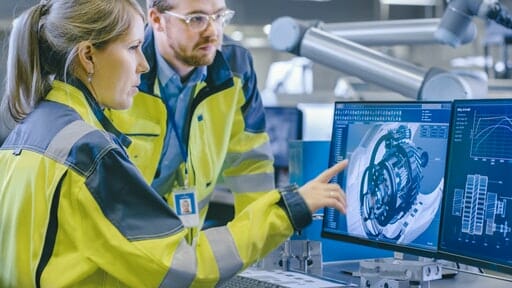How Machine Learning Addresses Manufacturing’s Skills Gap
The skills gap is one of the biggest problems facing American manufacturers. As many as 77% of surveyed manufacturers anticipate “ongoing difficulties” in attracting and retaining both entry-level and skilled workers. More than 2 million jobs are expected to be unfilled by 2030, costing the U.S. economy at least $1 trillion, according to recent research by Deloitte and The Manufacturing Institute.
Explainable machine learning technology offers a solution to both issues. By integrating explainable machine learning software into factories, manufacturers can optimize the production process, making them less dependent on operators with specific qualifications and experience. At the same time, they can use machine learning to empower their existing workforce with new skills and experience that improve their decision-making abilities.
Traditionally, many middle-skill level jobs in manufacturing require hands-on, applied training, licensing and certification, which can take more than a year. This contributes majorly to the labor shortage, as employers can’t find workers with the relevant skill sets, and workers, for their part, require time to build the skills necessary for their desired occupations, particularly when they relate to digital. Some companies, in response to this skills gap, have initiated digital training programs that emphasize credentials necessary for work in an Industry 4.0-equipped smart factory. Explainable machine learning software can be a crucial part of such training.
With a “digital twin” (i.e. a virtual model of the factory floor) created within the software, both entry-level and experienced engineers can build experience and test their decision-making skills in various hypothetical scenarios, without sacrificing either working time or quality of physical products. This allows factories to hire workers who may not have the desired level of experience for a particular role and efficiently bring them up to speed, even before starting their roles.
Explainable machine learning software also evens the playing field for existing workers at all skill levels. Traditionally, the production process is negatively impacted by hiring workers with less skill and experience, as one poor decision can cost the factory thousands of dollars or render a batch of products unusable. But, machine learning completely changes this equation.
By collecting data from all operators across a plant or production process, explainable machine learning software creates an objective model for understanding what works. Individual operators can then be provided with recommendations that optimize processes and parameters in real time, lessening reliance on individual skills and decision-making. These automatically generated machine learning models essentially capture the expertise of top performers and turn it into recommendations for less skilled or experienced operators, evening out the playing field.
As Industry 4.0 technology becomes more omnipresent across manufacturing sectors and factories get “smarter,” expect an emergence of a third, even more critical skills gap—a shortage of data scientists, who can analyze all the data produced by a factory and help manufacturers leverage this data to optimize the production process. Explainable machine learning software also tackles this side of the labor shortage. By employing an explainable machine learning solution, manufacturers can focus on making existing data scientists more efficient and improving their performance, or even using automatically generated machine learning models to help plant process operators make sense of large, complex data sets and understand the root cause of issues they may be exploring—in other words, turning chemical engineers into data scientists.
It’s critical to note that in order for machine learning technology to truly address the pervasive skills gap, explainability is crucial. When machine learning is used to train a factory operator, rather than a conventional training program, it can’t simply consist of instructions provided by a mysterious black box algorithm. Rather, the software must provide clear explanations as to why processes are happening the way they are. Otherwise, the operator will not benefit from the learning experience and build their skills.
This doesn’t only apply to training procedures. Whenever machine learning is used on the factory floor, explainability is necessary to build trust in the models that are created. If we seek to use machine learning as a tool to conquer the skills gap, we must provide tools that are explainable and easy to understand and trust, empowering the users to build their own skills and become vital participants in the smart factory of the future.
As Industry 4.0 technology becomes more omnipresent across manufacturing sectors and factories get “smarter,” expect an emergence of a third, even more critical skills gap—a shortage of data scientists.
Source: https://www.sdcexec.com/professional-development/supply-chain-education/article/21521129/fero-labs-how-machine-learning-addresses-manufacturings-skills-gap

